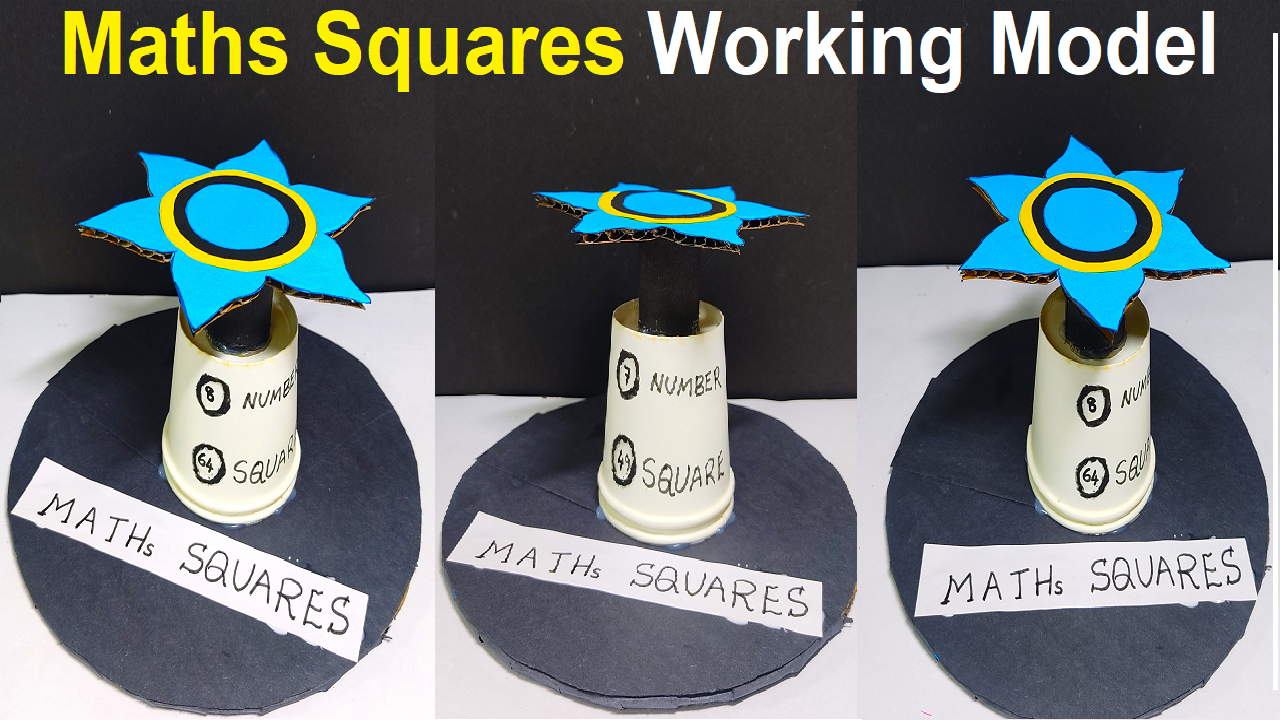Creating a working model to demonstrate squares in mathematics using cardboard, paper cups, and holes can be a creative and hands-on project.

Here’s a simple DIY project for a math square working model:
Materials Needed:
- Cardboard
- Ruler
- Pencil
- Scissors
- Colored paper or construction paper
- Glue or tape
- Paper cups
- String or yarn
- Hole puncher
- Markers
Steps to Create the Math Square Working Model:
Step 1: Prepare the Base:
- Cut a large square piece of cardboard to serve as the base for your working model.
Step 2: Create the Square:
- On the cardboard, draw a square using a ruler and pencil. This square will be the template for your working model.
Step 3: Cut Out the Square:
- Carefully cut out the square from the cardboard.
Step 4: Decorate the Square:
- Cover the square with colored paper or construction paper. This step is optional but adds visual appeal.
Step 5: Paper Cup Corners:
- Attach paper cups to each corner of the square using glue or tape. These will represent the vertices of the square.
Step 6: Hole Punching:
- Punch a hole near the top edge of each paper cup using a hole puncher.
Step 7: String or Yarn:
- Cut four pieces of string or yarn, each long enough to reach from the hole in the cup to the opposite side of the square.
Step 8: Attach String to Cups:
- Thread one end of each string through the hole in a paper cup and tie a knot to secure it.
Step 9: Thread Strings Through Holes:
- Thread the other end of each string through a hole near the opposite side of the square. This creates a diagonal across the square.
Step 10: Secure and Display:
- Tie knots on the backside of the square to secure the strings. Trim any excess string.
- Display your math square working model at the exhibition table.
Explanation:
- During the exhibition, explain that the paper cups at each corner represent the vertices of a square.
- Pulling the strings tight demonstrates the properties of a square, emphasizing equal sides and right angles.
This working model provides a tangible and interactive representation of a square in mathematics, making it an engaging display for a math project or exhibition. Visitors can physically manipulate the strings to see how the square maintains its shape and properties.

